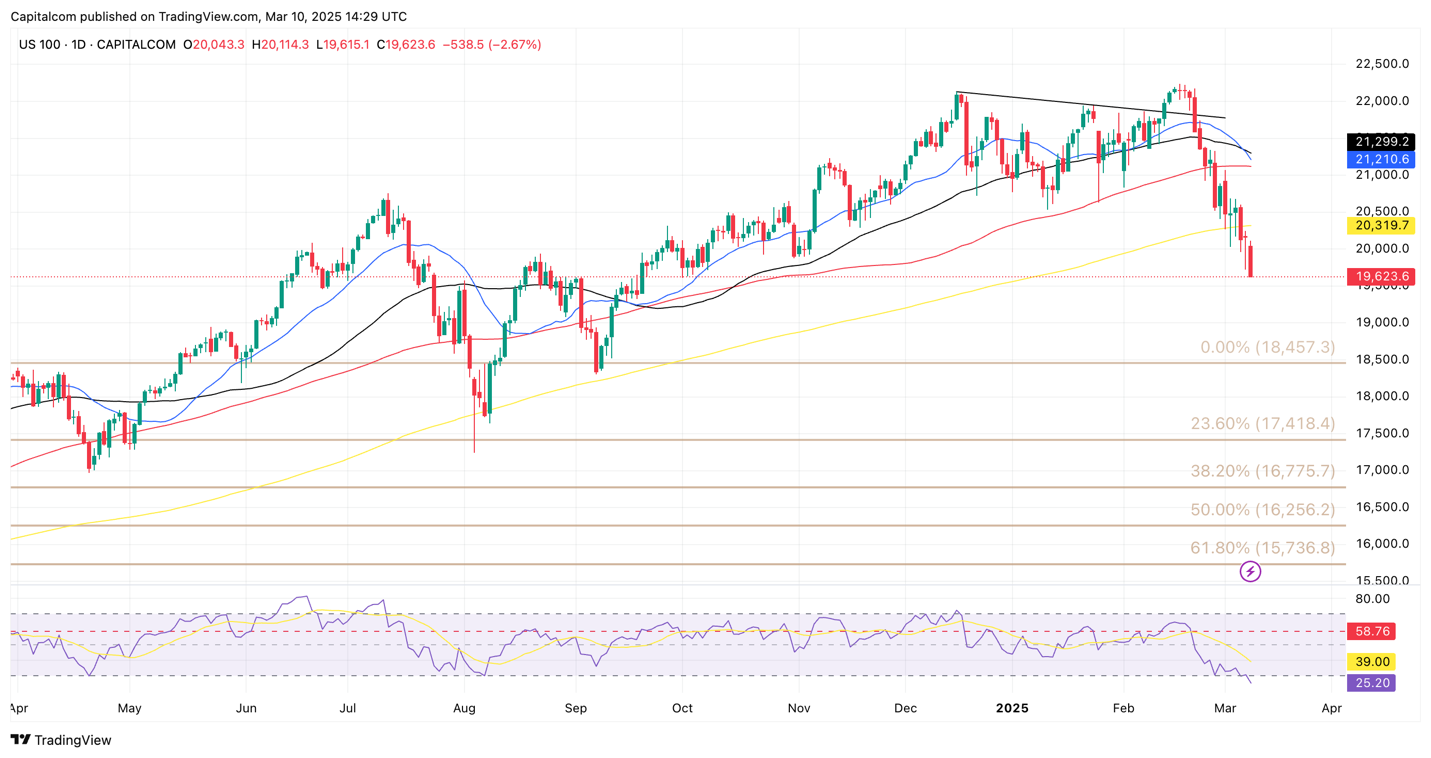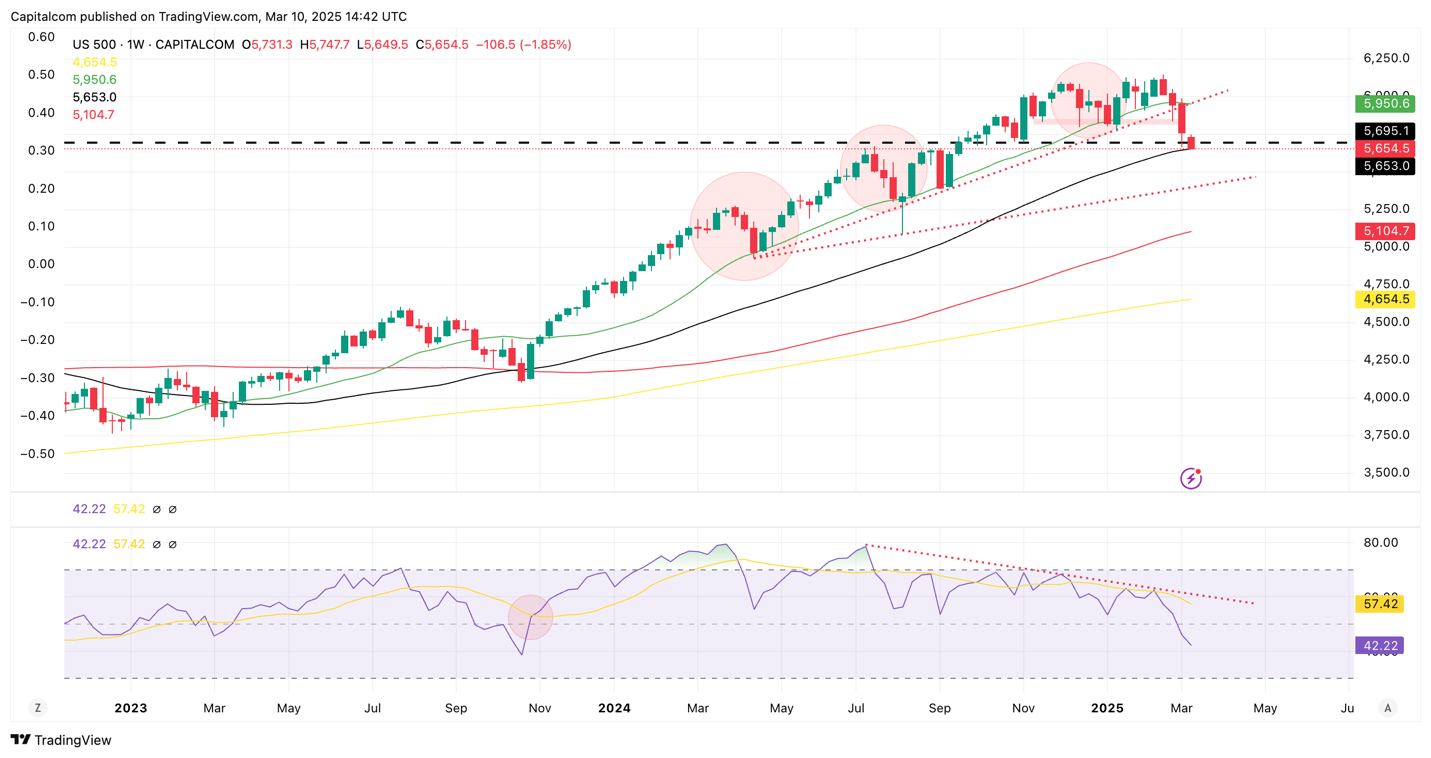Nasdaq 100 and S&P 500 unable to contain the selling
US stocks face increased downside pressure as market concerns about a trade war dominate
US equity futures started the week on a weaker note, continuing the recent trend of softness. The Nasdaq 100 extended heavy losses from Asian and European trading sessions, shedding nearly 500 points (2.5%) at the US open. Investor sentiment remains fragile as uncertainty surrounding Trump’s tariff policies fuels concerns about a potential global trade war and its implications for economic growth. Recession fears have exacerbated the selling pressure on US equities, contributing to the market’s current downturn.
The Nasdaq 100 has now slipped below all four of its key simple moving averages (20, 50, 100, and 200-day), failing to find support at these levels. Additionally, the Relative Strength Index (RSI) has dropped to 30 for the first time since August, when the triggering of the Sahm rule sparked a short-lived panic sell-off. However, this time, the oversold momentum appears stronger, suggesting the possibility of further bearish movement before any meaningful recovery.
US 100 daily chart

Past performance is not a reliable indicator of future results.
S&P 500 Joins the Decline
The S&P 500 has mirrored the Nasdaq’s weakness, dropping nearly 100 points on Monday. Like the Nasdaq, the index has fallen below all four of its key moving averages, with the RSI also dipping below 30. Despite reaching oversold conditions, selling pressure remains strong, indicating that further downside movement is likely before any stabilization occurs.
From a technical perspective, the weekly chart highlights a textbook bearish RSI divergence, which has now played out. The ongoing correction suggests potential downside targets, with the next key support level around 5,380, where an ascending trendline awaits. If this level fails to hold, historical support around 5,085 could provide a secondary cushion for the index.
S&P 500 weekly chart

Past performance is not a reliable indicator of future results.
Looking Ahead
While oversold conditions may spark short-term bounces, the broader risk-off sentiment and global trade uncertainties could sustain the bearish momentum in the near term. Market participants should closely monitor geopolitical developments and economic data releases for further cues on potential market direction.